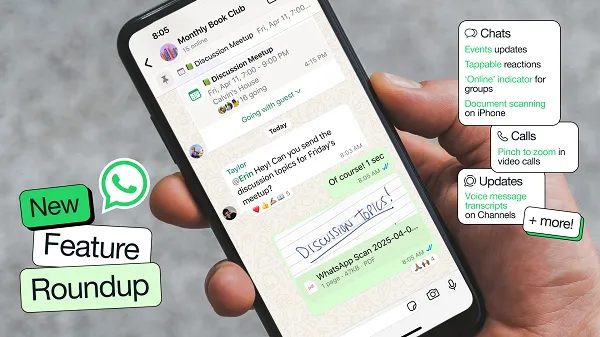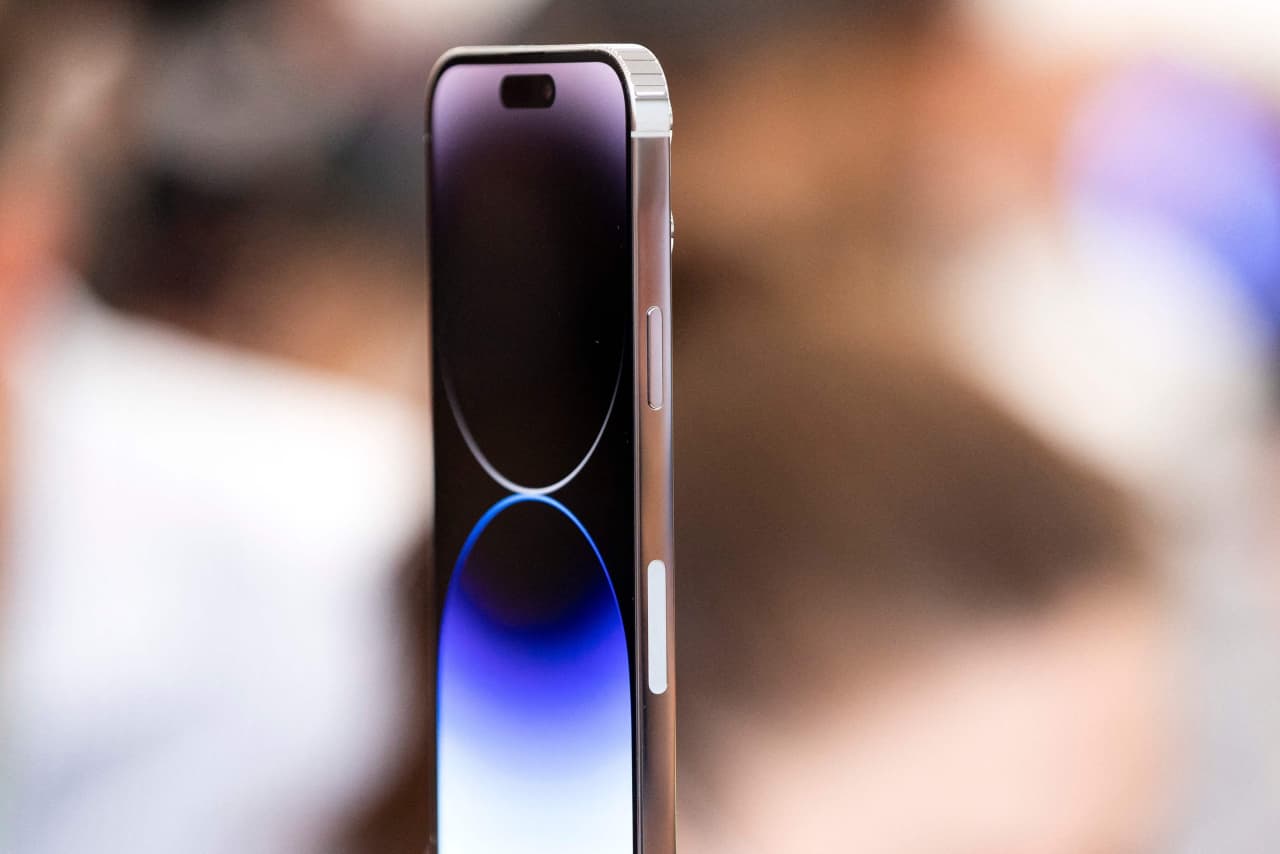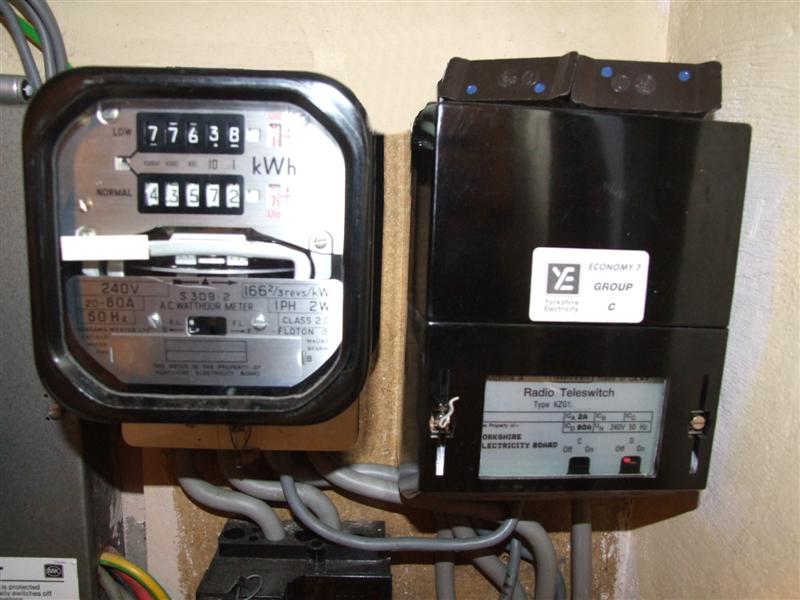How to use the Apple Passwords app
Apple’s new Passwords app (introduced with iOS 18, iPadOS 18, and macOS Sequoia) is a big leap forward in making password management simple and user-friendly for Apple users, even if it's not as robust as other password managers. If you’ve ever fumbled through Safari settings to find a saved login or toggled through iCloud Keychain menus to edit credentials, the Passwords app is for you. It’s designed to give you a dedicated home for all your saved login credentials, passkeys, Wi-Fi passwords and two-factor authentication codes, all in one secure, easy-to-navigate interface. What is the Apple Passwords app? The Passwords app is Apple’s standalone password manager. While Apple users have long been able to save passwords using iCloud Keychain, the actual management experience was buried within Settings or Safari. With the Passwords app, Apple has turned what was once a tucked-away feature into a full-fledged application that works across iPhone, iPad and Mac. The app holds all your saved login credentials, plus passkeys, verification codes and Wi-Fi passwords. Everything is securely stored, synced via iCloud and protected by Face ID, Touch ID or your device passcode. With it, you can more easily search for logins, get security recommendations, share credentials with family members and store two-factor authentication codes all in one place. Rob Webb for Engadget How to access the Passwords app on iPhone To access the Passwords app on your iPhone: Make sure your device is updated to iOS 18 or later. Find the Passwords app using Spotlight Search, the App Library or your Home Screen. Tap the app icon and authenticate using Face ID, Touch ID or your device passcode. Once you've opened the app, you'll see your saved accounts organized alphabetically. A search bar at the top makes it easy to find what you're looking for. Logins are grouped by category, including: Passkeys (passwordless login credentials) Codes (verification codes for methods like two-factor authentication) Wi-Fi Security (compromised or reused passwords) Tapping any item shows detailed information, including login URLs, usernames, passwords and any associated notes. How to add and edit passwords manually Most passwords are saved automatically when you use Safari to log in to websites, but you can also add entries manually, including verification codes and passkeys. To manually add a login: Open the Passwords app. Tap the + icon in the bottom-right corner. Choose New Password. Enter the site or service name, username and password. Add any optional notes using the Notes field. Tap Save to finish. To edit a saved password: Open the relevant entry. Tap Edit. Update any details as needed. Select Set up code (if required), where you will be prompted to enter a setup key or scan a QR code with the camera. Tap Save to save your changes. How to enable and use Autofill with the Passwords app Autofill makes logging in fast and seamless. Instead of typing out usernames and passwords, your iPhone can automatically suggest saved credentials when you visit a login page. To enable Autofill: Go to Settings > Apps > Passwords. View Autofill Settings. Make sure Autofill Passwords and Passkeys are turned on. Choose Passwords as your default autofill provider. Once Autofill is enabled, Safari and many third-party apps will offer login suggestions from the Passwords app when you tap into a username or password field. If there are multiple logins for a site, you’ll be prompted to select the right one. When creating a new login in Safari, you’ll also be asked to save the new password to the Passwords app. This ensures it’s available across all your Apple devices. How to sync passwords to your devices with iCloud Keychain The Passwords app uses iCloud Keychain to sync your saved credentials across your Apple devices. If you use multiple devices like an iPhone, iPad and Mac, enabling Keychain ensures your logins stay consistent everywhere. To enable iCloud Keychain: Open Settings. Tap your Apple ID at the top of the screen. Tap iCloud > Passwords and Keychain. Turn on Sync this iPhone (or iPad). You may be prompted to authenticate or confirm your identity with a verification code. Once it’s set up, all your saved credentials will be securely synced via iCloud. This also allows the Passwords app to work in harmony with macOS and iPadOS, meaning you can view and edit your saved data from any of your Apple devices. Rob Webb for Engadget How to use passkeys and verification codes The Passwords app supports two newer authentication features that improve both security and convenience: passkeys and verification codes. Passkeys Passkeys are a new way to sign in without using a traditional password. Instead, they use Face ID, Touch ID or a device passcode to confirm your identity. They are intended to be more phishing-resistant since they can’t be reused or copied across services. If a website or app supports passkeys, Safari will prompt you to create one when signing in

Apple’s new Passwords app (introduced with iOS 18, iPadOS 18, and macOS Sequoia) is a big leap forward in making password management simple and user-friendly for Apple users, even if it's not as robust as other password managers. If you’ve ever fumbled through Safari settings to find a saved login or toggled through iCloud Keychain menus to edit credentials, the Passwords app is for you. It’s designed to give you a dedicated home for all your saved login credentials, passkeys, Wi-Fi passwords and two-factor authentication codes, all in one secure, easy-to-navigate interface.
What is the Apple Passwords app?
The Passwords app is Apple’s standalone password manager. While Apple users have long been able to save passwords using iCloud Keychain, the actual management experience was buried within Settings or Safari. With the Passwords app, Apple has turned what was once a tucked-away feature into a full-fledged application that works across iPhone, iPad and Mac.
The app holds all your saved login credentials, plus passkeys, verification codes and Wi-Fi passwords. Everything is securely stored, synced via iCloud and protected by Face ID, Touch ID or your device passcode. With it, you can more easily search for logins, get security recommendations, share credentials with family members and store two-factor authentication codes all in one place.
How to access the Passwords app on iPhone
To access the Passwords app on your iPhone:
Make sure your device is updated to iOS 18 or later.
Find the Passwords app using Spotlight Search, the App Library or your Home Screen.
Tap the app icon and authenticate using Face ID, Touch ID or your device passcode.
Once you've opened the app, you'll see your saved accounts organized alphabetically. A search bar at the top makes it easy to find what you're looking for. Logins are grouped by category, including:
Passkeys (passwordless login credentials)
Codes (verification codes for methods like two-factor authentication)
Wi-Fi
Security (compromised or reused passwords)
Tapping any item shows detailed information, including login URLs, usernames, passwords and any associated notes.
How to add and edit passwords manually
Most passwords are saved automatically when you use Safari to log in to websites, but you can also add entries manually, including verification codes and passkeys. To manually add a login:
Open the Passwords app.
Tap the + icon in the bottom-right corner.
Choose New Password.
Enter the site or service name, username and password.
Add any optional notes using the Notes field.
Tap Save to finish.
To edit a saved password:
Open the relevant entry.
Tap Edit.
Update any details as needed.
Select Set up code (if required), where you will be prompted to enter a setup key or scan a QR code with the camera.
Tap Save to save your changes.
How to enable and use Autofill with the Passwords app
Autofill makes logging in fast and seamless. Instead of typing out usernames and passwords, your iPhone can automatically suggest saved credentials when you visit a login page.
To enable Autofill:
Go to Settings > Apps > Passwords.
View Autofill Settings.
Make sure Autofill Passwords and Passkeys are turned on.
Choose Passwords as your default autofill provider.
Once Autofill is enabled, Safari and many third-party apps will offer login suggestions from the Passwords app when you tap into a username or password field. If there are multiple logins for a site, you’ll be prompted to select the right one.
When creating a new login in Safari, you’ll also be asked to save the new password to the Passwords app. This ensures it’s available across all your Apple devices.
How to sync passwords to your devices with iCloud Keychain
The Passwords app uses iCloud Keychain to sync your saved credentials across your Apple devices. If you use multiple devices like an iPhone, iPad and Mac, enabling Keychain ensures your logins stay consistent everywhere. To enable iCloud Keychain:
Open Settings.
Tap your Apple ID at the top of the screen.
Tap iCloud > Passwords and Keychain.
Turn on Sync this iPhone (or iPad).
You may be prompted to authenticate or confirm your identity with a verification code. Once it’s set up, all your saved credentials will be securely synced via iCloud. This also allows the Passwords app to work in harmony with macOS and iPadOS, meaning you can view and edit your saved data from any of your Apple devices.
How to use passkeys and verification codes
The Passwords app supports two newer authentication features that improve both security and convenience: passkeys and verification codes.
Passkeys
Passkeys are a new way to sign in without using a traditional password. Instead, they use Face ID, Touch ID or a device passcode to confirm your identity. They are intended to be more phishing-resistant since they can’t be reused or copied across services.
If a website or app supports passkeys, Safari will prompt you to create one when signing in or registering. Once saved, the passkey is stored in the Passwords app.
To view and manage passkeys:
Open the Passwords app.
Tap Passkeys.
You’ll see a Passkey section if one has been saved.
Passkeys work across Apple devices and can even be used on non-Apple platforms by scanning a QR code when prompted.
Verification codes
Verification codes are used in two-factor authentication (2FA) systems. The Passwords app can now generate these codes automatically.
To set up a verification code:
Open the Passwords app.
Tap the login entry you want to edit.
Tap Edit > Set Up Code.
Scan a QR code provided by the website, or enter the code manually.
The app will generate a six-digit code that refreshes every 30 seconds. The code will also autofill when you log into a compatible website or app, saving you the hassle of switching to a separate authenticator app.
How to share passwords securely
You can share saved credentials with others using iMessage. This is helpful for families or teams who need access to shared accounts. The passwords are sent via end-to-end encrypted messages, ensuring privacy and security. To share a password:
Open the Passwords app.
Tap the entry you want to share.
Tap the Share button (a square with an arrow).
Choose a recipient in Messages.
How to check for weak or compromised passwords
Apple includes built-in security checks for your saved credentials.
To view security recommendations:
Open the Passwords app.
Tap Security.
You’ll see a list of passwords that are:
Reused across multiple accounts
Easily guessable
Involved in known data breaches
You can tap any entry to update the password directly. This feature helps improve your overall security hygiene with minimal effort.
How secure is the Passwords app?
Apple uses end-to-end encryption for everything in the Passwords app. That means your data is encrypted on your device and can only be decrypted by your device. Even Apple doesn’t have access to your credentials.
Accessing the app requires authentication via Face ID, Touch ID or your passcode. And if someone steals your device, your saved passwords remain locked behind biometric security.
Additionally, Apple participates in the FIDO Alliance, promoting secure, passwordless logins and helping drive adoption of technologies like passkeys.
Using the Passwords app on iPad and Mac
The Passwords app is also available on:
iPad tablets running iPadOS 18 or later
Mac laptops and desktops running macOS Sequoia or later
On iPad, the app works the same way as on iPhone, offering full management of your saved credentials. On Mac, you can find Passwords in System Settings or by using Spotlight Search.
Syncing is handled automatically through iCloud Keychain. If you're logged into the same Apple ID on all your devices, your passwords will stay in sync.This article originally appeared on Engadget at https://www.engadget.com/apps/how-to-use-the-apple-passwords-app-120026715.html?src=rss




























































































































































































![How to Find Low-Competition Keywords with Semrush [Super Easy]](https://static.semrush.com/blog/uploads/media/73/62/7362f16fb9e460b6d58ccc09b4a048b6/how-to-find-low-competition-keywords-sm.png)


